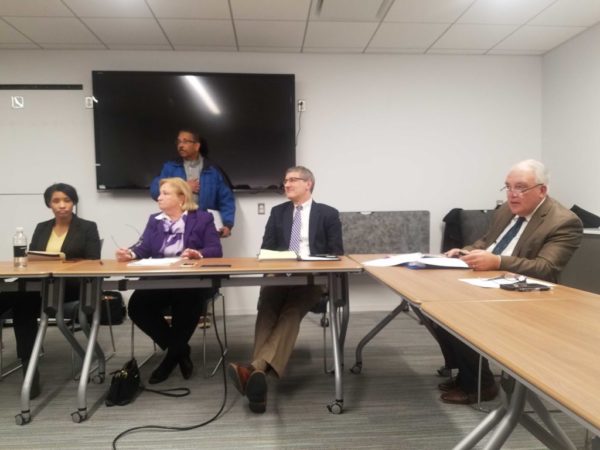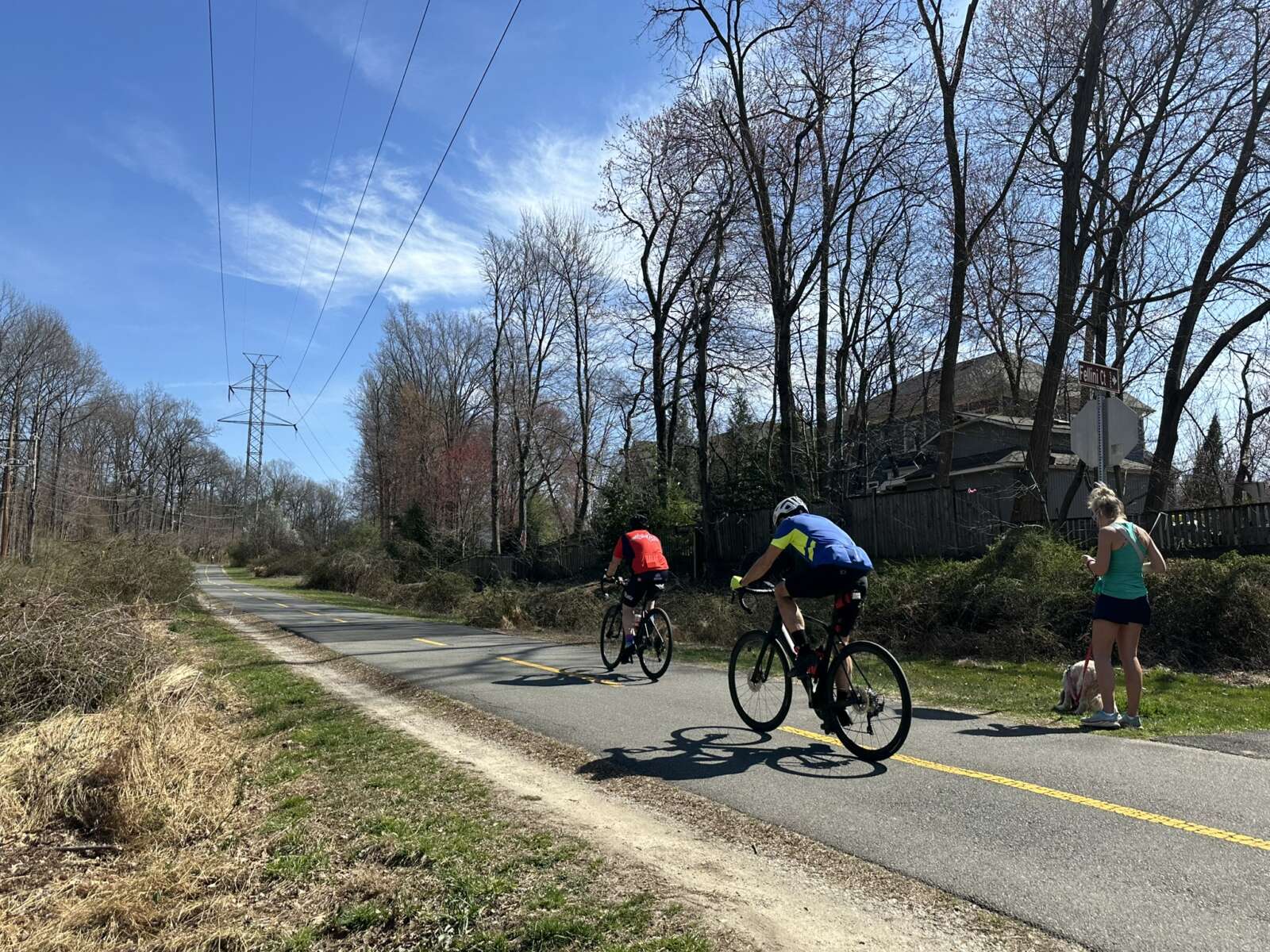Meetings to decide the fate of the Northern Virginia Juvenile Detention Center kicked off last night in Falls Church.
About two dozen people gathered last night at the Falls Church City Hall (300 Park Avenue) for the first of three regional meetings to get input on what should happen to the facility.
The center currently serves Falls Church, Arlington and Alexandria as a detention facility for kids deemed a flight risk while awaiting trial or a danger to themselves or others. But since juvenile incarceration rates have fallen more than 72% since 2006, according to a spokesperson for the Moss Group, the center no longer fills its 70-bed capacity.
Community leaders commissioned a study by the Moss Group to evaluate the efficiency of the center and options for its future.
Currently, there are 27 kids held in the facility, Johnitha McNair, the executive director of the center, said. Options include closing the center, remodeling it or simply cutting down on staff and bed size.
Attendees included curious community members from Arlington, Alexandria and Falls Church, board members who run the center, representatives from the NAACP, members of the Falls Church City Council, an American University student and professional child advocates.
A spokesman from the NAACP said he is concerned about what will happen if the center is closed, noting that the numbers may rise and fall throughout the years, potentially leaving the three cities in a conundrum if incarceration rates rise again.
Several attendees brought up issues not with the capacity issues of the facility, but rather with how the facility is run and how the physical design might impact the kids being held within.
Attorney Juliet Hiznay, who has been practicing law in the realm of education law and has experience helping children with special needs, said she toured the facility in 2018 and was disheartened by what she saw. She said she doesn’t think that the detention center can be repurposed without extreme structural changes.
“My concern is not about the goodwill of the people running the facility, but the physical limitations of the facility itself,” she said, adding that the cell-block structure of the center is poorly designed for kids. “I find it hard to believe it could be repurposed for any type of therapeutic intervention.”
Hiznay said there were few windows in the facility that allowed for suitable sunlight, limited mobility within in the center, very few opportunities for kids to get exercise and fresh air and that the kids she interacted with seemed desperate for attention.
McNair, the center’s director, countered a few of Hiznay’s statements through, saying that kids in the detention center have “ample” time to play outside and interact with one another. NcNair also said that there are at least two 12″ by 48″ windows in each cell room and that kids are kept busy throughout the day with activities such as group therapy, social rehabilitation programs and reentry initiatives.
There was discussion throughout the evening about redesigning the center to include a more open “dorm-style” floor plan that are seen in other detention facilities, which would stop queuing when kids try to enter new rooms, but experts at the meeting expressed potential security concerns around this idea.
Moss Group representatives at the meeting said they work with an architect who can advise city officials on their options to remodel the center.
“We work very hard to recognize that our clients are children,” McNair said at last night’s meeting, adding that she hopes to keep the center in operation and is open to structural changes that would allow the center to rethink its approach by making programs more focused on mental health and constructive development.
Mental health and the ability to better assist kids that walk through the center’s doors came up several times throughout the meeting.
McNair said that the staff noticed that a lot of the young women were acting up around 8 p.m. when they were supposed to go to bed. After some thinking, they realized that this was because bedtime was when a lot of the girls in the center experienced abuse at home and were possibly experiencing symptoms of post-traumatic stress disorder and anxiety.
“We already know the percent of kids going into these facilities with trauma and mental health issues are very high,” Hiznay told Tysons Reporter in an interview after the public hearing.
Now, two more similar public hearings will be held in Alexandria (Lee Center Exhibit Hall, 1108 Jefferson Street) next Wednesday (Nov. 20) from 7 to 8:30 p.m. and in Arlington (Central Library Auditorium, 1015 N. Quincy Street) next Thursday (Nov. 21) from 7 to 8:30 p.m.
People who cannot attend the meeting can fill out an online survey.
The final report from the Moss Group is set to come out in January. The Alexandria, Falls Church and Alexandria governments will review it in February and March. It is unclear when a final plan for the center will be announced.
Recent Stories

Laura Schwartz is a licensed Realtor in VA and D.C. with McEnearney Associates in Vienna. You can follow Laura on Instagram at @LauraSchwartzRealtor or her Facebook page. Laura can be reached at 703-283-6120 or [email protected]. The…





